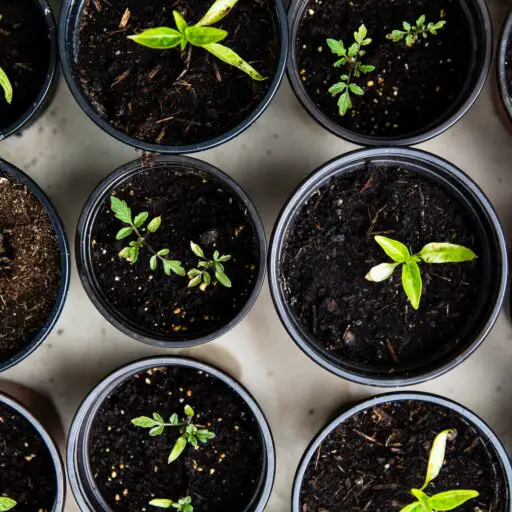Support our educational content for free when you purchase through links on our site. Learn more

Imagine a vibrant garden buzzing with laughter, where children dig their hands into the soil, planting seeds of knowledge and nurturing friendships. Community gardens are not just patches of green; they are living classrooms that cultivate healthy habits, social skills, and a deep appreciation for nature. Did you know that kids who engage in gardening activities are more likely to consume fruits and vegetables? 🌱 This article dives deep into the 10 incredible benefits of community gardens for children, revealing how these green spaces can transform lives and communities.
From hands-on learning experiences to fostering social connections, community gardens provide a rich tapestry of opportunities for kids to grow, explore, and thrive. In this post, we’ll explore practical tips on how to start a community garden, the best crops for young gardeners, and how these gardens serve as catalysts for positive community change. So, grab your gardening gloves and let’s dig into the wonders of community gardening!
Key Takeaways
- Hands-On Learning: Community gardens provide children with practical knowledge about gardening, nutrition, and environmental stewardship.
- Social Skills Development: Kids enhance their teamwork, communication, and empathy while working alongside peers and community members.
- Health Benefits: Engaging in gardening promotes physical activity and encourages healthier eating habits, contributing to overall well-being.
- Community Building: These gardens foster a sense of belonging and strengthen community ties, bringing people together from diverse backgrounds.
Ready to start your gardening journey? 👉 Shop gardening supplies on Gardener’s Supply or Home Depot to equip your community garden today! 🌿
Table of Contents
- Quick Tips and Facts About Community Gardens for Kids 🌱
- The Roots of Community Gardens: A Brief History 🌍
- What Is a Community Garden? 🌼
- The Top 10 Benefits of Community Gardens for Children 🌟
- Best Types of Crops for Community Gardens: Kid-Friendly Choices 🌽
- Public Health Benefits of Community Gardens: Growing Healthy Kids 🍏
- Community Engagement: How Gardens Foster Social Skills in Kids 🤝
- Explore More Ways to Promote Positive Community Change Through Gardening 🌿
- Tips for Starting a Community Garden with Kids: A Step-by-Step Guide 🛠️
- Incorporating STEM Learning in Community Gardening for Children 🔬
- Conclusion: Cultivating a Brighter Future with Community Gardens 🌞
- Recommended Links for Community Gardening Resources 📚
- FAQ: Your Questions About Community Gardens Answered ❓
- Reference Links for Further Reading 🔗
Quick Tips and Facts About Community Gardens for Kids 🌱
- Did you know? Studies show that children who participate in gardening activities consume more fruits and vegetables! Source: University of Florida IFAS Extension That’s a win for healthy habits!
- Fun Fact: A single community garden can produce hundreds of pounds of fresh produce each year, providing healthy food options for families and combating food insecurity. Source: American Community Gardening Association
- Tip: Involve kids in every step of the gardening process, from planning and planting to harvesting and cooking. This hands-on experience fosters a sense of ownership and pride in their work.
For more tips on getting started, check out our Gardening for Beginners category.
The Roots of Community Gardens: A Brief History 🌍

Community gardens, in their essence, are not a new concept. They harken back to ancient times when communities relied on shared land for sustenance. However, the modern community garden movement as we know it today emerged in the late 19th and early 20th centuries.
- The Victorian Era: The “Allotment” system in England provided small plots of land for working-class families to grow their own food, offering a source of nourishment and recreation.
- The City Beautiful Movement: In the United States, the late 1800s saw a surge in urban planning that emphasized green spaces and beautification. Community gardens were seen as a way to improve the quality of life in crowded cities.
- The World Wars: “Victory Gardens” sprouted up during World War I and II, encouraging citizens to grow their own food to supplement rations and boost morale. This era solidified the connection between community gardening and resilience during challenging times.
Today, community gardens continue to flourish as vibrant hubs for social interaction, environmental stewardship, and access to fresh, healthy food. Learn more about the different Types of Community Gardens 2024 and find one near you!
What Is a Community Garden? 🌼
A community garden is more than just a patch of land where vegetables grow; it’s a thriving ecosystem of shared resources, collective learning, and community building. Here’s what defines a community garden:
- Shared Space: A designated area of land, often in an urban or suburban setting, that is collectively gardened by members of the community.
- Collaborative Effort: Community members work together to plan, plant, maintain, and harvest the garden, sharing responsibilities and the fruits (and vegetables!) of their labor.
- Open Access: Community gardens are typically open to anyone who wishes to participate, regardless of age, experience, or background.
- Educational Opportunities: These gardens often serve as living classrooms, providing hands-on learning experiences about gardening, nutrition, and environmental sustainability.
The Top 10 Benefits of Community Gardens for Children 🌟
Community gardens offer a plethora of benefits for children, nurturing their physical, mental, and emotional well-being. Let’s delve into the top 10 ways these green spaces enrich the lives of young ones:
- Hands-On Learning: Gardening is a sensory-rich experience that engages children’s curiosity and fosters a love for nature. From sowing seeds to harvesting ripe produce, every step is a tangible lesson in plant life cycles, soil science, and the interconnectedness of ecosystems.
- Healthy Eating Habits: Children who participate in gardening are more likely to develop a taste for fresh fruits and vegetables. As Tulane University’s Public Health experts note, “Community gardens can increase the availability of fresh fruits and vegetables — especially important in areas with limited access to grocery stores and farmers’ markets.” Source: Tulane University The act of growing their own food instills a sense of appreciation for healthy choices and empowers them to make nutritious decisions.
- Physical Activity: Gardening gets kids moving! From digging and planting to weeding and watering, these activities provide a fun and engaging form of exercise that promotes physical fitness and coordination.
- Environmental Stewardship: Community gardens teach children about the importance of caring for the environment. They learn about composting, water conservation, and the role of pollinators, fostering a sense of responsibility for protecting our planet.
- Social Skills Development: Community gardens are vibrant social hubs where children interact with people of all ages and backgrounds. They learn to cooperate, communicate effectively, and work together towards a common goal, building valuable social skills and a sense of community belonging.
- Stress Reduction and Emotional Well-being: Spending time in nature has been proven to reduce stress and improve mood. The act of gardening itself, with its repetitive motions and connection to the earth, can be incredibly therapeutic for children, providing a sense of calm and focus.
- Increased Self-Confidence: Watching a tiny seed sprout into a flourishing plant is an empowering experience for children. The act of nurturing life and witnessing the fruits of their labor boosts self-esteem and instills a sense of accomplishment.
- Creativity and Imagination: Community gardens are blank canvases for creativity! Children can design their own garden plots, build whimsical structures, and let their imaginations run wild as they connect with nature.
- STEM Learning Opportunities: Community gardens are teeming with opportunities for STEM (Science, Technology, Engineering, and Math) education. Children can conduct experiments, collect data on plant growth, learn about different gardening techniques, and explore the science behind composting and soil health.
- Community Building: Community gardens bring people together! They create a shared space where neighbors connect, share knowledge, and build lasting relationships. For children, this fosters a sense of belonging and strengthens community ties.
Best Types of Crops for Community Gardens: Kid-Friendly Choices 🌽
Choosing the right crops can make all the difference in keeping kids engaged and excited about gardening. Here are some kid-friendly options that are relatively easy to grow, quick to yield, and sure to delight young gardeners:
- Cherry Tomatoes: These bite-sized bursts of sweetness are a favorite among kids. Choose compact varieties like ‘Tumbling Tom’ or ‘Sweet Baby Girl’ for container gardening.
- Strawberries: What’s sweeter than plucking a juicy strawberry straight from the plant? These delightful fruits thrive in raised beds or hanging baskets.
- Radishes: These fast-growing root vegetables are ready to harvest in about a month, providing a quick sense of accomplishment for impatient little gardeners.
- Lettuce: From crunchy romaine to colorful leaf lettuces, these greens are easy to grow and perfect for summer salads.
- Sunflowers: These towering beauties add a touch of whimsy to any garden and provide a tasty snack with their edible seeds.
- Pumpkins: Perfect for fall festivities, pumpkins are a fun and rewarding crop to grow with kids. Just be sure to have plenty of space!
For more ideas, explore our Garden Design Ideas category.
Public Health Benefits of Community Gardens: Growing Healthy Kids 🍏
Community gardens play a vital role in promoting public health, particularly for children. Here’s how:
- Increased Access to Fresh Produce: Community gardens increase access to affordable, nutritious food, especially in underserved communities designated as “food deserts.” This access to fresh fruits and vegetables can help combat diet-related health issues such as obesity, heart disease, and type 2 diabetes.
- Physical Activity and Reduced Risk of Obesity: Gardening is an enjoyable form of physical activity that can help children maintain a healthy weight. The Centers for Disease Control and Prevention (CDC) recommends that children and adolescents get at least 60 minutes of physical activity each day, and gardening can contribute to that goal. Source: Centers for Disease Control and Prevention
- Improved Mental Health: Studies have shown that spending time in nature and engaging in gardening activities can reduce stress, anxiety, and symptoms of depression. The American Horticultural Therapy Association highlights the therapeutic benefits of gardening, stating that it “can be an effective treatment for a wide range of physical and mental disabilities.” Source: American Horticultural Therapy Association
- Community Engagement and Social Support: Community gardens foster social connections and a sense of belonging, which are crucial for mental and emotional well-being. The social interaction and support found in these spaces can contribute to a stronger sense of community and improved overall health.
Community Engagement: How Gardens Foster Social Skills in Kids 🤝
Community gardens are more than just places to grow food; they’re fertile ground for cultivating essential social skills in children. Here’s how:
- Collaboration and Teamwork: From planning and planting to weeding and harvesting, community gardens provide ample opportunities for children to work together towards a common goal. They learn to share tools, divide tasks, and cooperate effectively, building a strong foundation for teamwork.
- Communication Skills: In a community garden setting, children interact with people of all ages and backgrounds. They learn to communicate their ideas, listen attentively to others, and engage in respectful dialogue, enhancing their communication and interpersonal skills.
- Problem-Solving Abilities: Gardening inevitably presents challenges, from pesky insects to unpredictable weather. Children learn to identify problems, brainstorm solutions, and adapt to changing circumstances, developing valuable problem-solving abilities.
- Empathy and Respect for Diversity: Community gardens bring together people from diverse backgrounds, fostering a sense of inclusivity and respect for different perspectives. Children learn to appreciate the richness of diversity and develop empathy by working alongside individuals from various walks of life.
Explore More Ways to Promote Positive Community Change Through Gardening 🌿
Community gardens are powerful catalysts for positive change, extending their impact far beyond the garden gates. Here are some ways these green spaces contribute to a brighter future:
- Food Security and Justice: Community gardens increase access to fresh, healthy food, particularly in underserved communities where access to nutritious options is limited. They empower residents to take control of their food sources and promote food sovereignty.
- Economic Empowerment: Some community gardens generate income by selling produce at farmers’ markets or through community-supported agriculture (CSA) programs. This can provide economic opportunities for gardeners and contribute to the local economy.
- Environmental Sustainability: Community gardens promote sustainable practices such as composting, water conservation, and the use of organic gardening methods. They increase green spaces in urban areas, reduce the carbon footprint associated with food transportation, and provide habitats for pollinators and other wildlife.
- Community Building and Social Cohesion: Community gardens bring people together from all walks of life, fostering a sense of belonging, shared purpose, and social cohesion. They create opportunities for intergenerational connections, strengthen community ties, and contribute to safer, more vibrant neighborhoods.
To learn more about the impact of community gardens, explore our Benefits of Community Gardens category.
Tips for Starting a Community Garden with Kids: A Step-by-Step Guide 🛠️
Ready to embark on a rewarding journey of creating a community garden with kids? Here’s a step-by-step guide to help you get started:
- Gather Community Support: Enthusiasm is contagious! Start by rallying support from parents, teachers, community members, and local organizations. Host meetings, conduct surveys, and spread the word about your vision for a thriving community garden.
- Find the Perfect Location: Look for a sunny spot with access to water and good drainage. Consider factors such as accessibility, visibility, and proximity to the community you’re serving.
- Secure Funding and Resources: Community gardens often rely on a combination of funding sources, including grants, donations, and in-kind contributions. Explore local grant opportunities, reach out to businesses for sponsorships, and organize fundraising events to support your garden.
- Plan Your Garden Design: Involve kids in the exciting process of designing the garden layout! Consider factors such as the types of crops you want to grow, accessibility needs, and the creation of dedicated spaces for children’s activities.
- Prepare the Soil and Build Beds: Enrich the soil with compost, build raised beds if needed, and create pathways for easy access. Get kids involved in the hands-on work of preparing the garden for planting.
- Choose Kid-Friendly Crops: Select crops that are easy to grow, quick to yield, and appealing to young palates. Think cherry tomatoes, strawberries, radishes, and colorful lettuces.
- Plant, Water, and Weed Together: Make gardening a fun and engaging activity for kids by involving them in every step of the process. Teach them how to plant seeds, water the garden, and identify weeds.
- Celebrate Your Harvest: The culmination of all your hard work deserves a celebration! Host a harvest festival, organize potlucks featuring garden-fresh ingredients, and share the bounty with the community.
For guidance on community garden policies and best practices, visit our Community Garden Policies category.
Incorporating STEM Learning in Community Gardening for Children 🔬
Community gardens are living laboratories brimming with opportunities for hands-on STEM learning. Here are some creative ways to integrate STEM education into your gardening activities:
- Plant Life Cycles and Botany: Observe the fascinating transformation of seeds into seedlings and eventually, mature plants. Dissect flowers, identify different plant parts, and learn about the process of photosynthesis.
- Soil Science and Composting: Explore the composition of soil, learn about the role of microorganisms in decomposition, and build a compost bin to recycle food scraps into nutrient-rich fertilizer. Conduct experiments to test different composting methods and observe the decomposition process.
- Weather and Climate: Track daily weather patterns, measure rainfall, and learn about the impact of climate on plant growth. Discuss climate change and its potential effects on agriculture and food security.
- Math and Measurement: Use measuring tools to calculate garden bed dimensions, track plant growth, and determine the yield of your harvest. Create graphs and charts to visualize data and analyze trends.
- Engineering and Design: Design and build trellises for climbing plants, construct irrigation systems, or create innovative garden structures using recycled materials. Encourage problem-solving and creative thinking through hands-on building projects.
For more ideas on incorporating STEM learning into your community garden, check out our Community Garden Events category.
Conclusion: Cultivating a Brighter Future with Community Gardens 🌞

In summary, community gardens are a treasure trove of benefits for children, serving as vibrant spaces for learning, socialization, and personal growth. From hands-on educational opportunities to increased access to fresh produce, these gardens foster a sense of community and belonging while promoting healthier lifestyles.
Positives:
- Hands-on Learning: Children gain practical knowledge about gardening, nutrition, and environmental stewardship.
- Social Skills Development: Kids learn teamwork, communication, and empathy as they work alongside peers and community members.
- Health Benefits: Gardening encourages physical activity and healthy eating habits, contributing to overall well-being.
Negatives:
- Resource Intensive: Starting and maintaining a community garden requires time, effort, and resources, which can be challenging for some communities.
- Weather Dependent: Gardening is subject to the whims of nature, and adverse weather conditions can affect crop yields and participation.
Overall, we confidently recommend getting involved in or starting a community garden, especially with children. The rewards far outweigh the challenges, and the experience can be life-changing for young participants. So, grab your gardening gloves and dig into this rewarding journey!
Recommended Links for Community Gardening Resources 📚
-
👉 Shop Gardening Supplies on:
- Gardener’s Supply Company: Gardener’s Supply
- Home Depot: Home Depot
- Amazon: Gardening Supplies
-
Books on Gardening with Kids:
- “The Garden Classroom: Hands-On Activities in Math, Science, Literacy, and Art” – Amazon Link
- “Roots, Shoots, Buckets & Boots: Gardening Together with Children” – Amazon Link
FAQ: Your Questions About Community Gardens Answered ❓

Why are community gardens important for kids?
Community gardens are crucial for kids as they provide a hands-on learning environment where they can explore nature, develop essential life skills, and understand the importance of sustainability. These gardens foster a connection to the earth, encouraging children to appreciate where their food comes from and to make healthier dietary choices.
Read more about “What Are the Objectives of Gardening? … 🌱”
What are the positive effects of community gardens?
Community gardens positively impact both individual participants and the broader community. They promote physical health through increased activity, enhance mental well-being through stress relief, and foster social connections among diverse groups of people. Additionally, they contribute to food security by providing access to fresh produce in areas where it may be lacking.
Read more about “What Does It Cost to Start a Garden? 15 Essential Insights for 2024 🌱”
How is gardening beneficial for kids?
Gardening offers numerous benefits for children, including:
- Physical Activity: Engaging in gardening tasks promotes fitness and coordination.
- Educational Opportunities: Kids learn about biology, ecology, and nutrition through hands-on experiences.
- Social Skills Development: Working together in a garden fosters teamwork, communication, and respect for others.
Read more about “What are the Objectives of a Garden? …”
What are the benefits of school community gardens?
School community gardens provide a unique platform for educational enrichment. They support curriculum goals by offering practical applications of science, math, and art. Moreover, they encourage parental involvement and community engagement, creating a supportive network for students. These gardens also promote healthy eating habits and improve the overall school environment by beautifying the grounds.
Read more about “🌱 15 Steps to Starting a Community Garden: Your Guide to Growing Together in 2024”
How can I get involved in a community garden?
Getting involved in a community garden is simple! Start by researching local gardens in your area, attending community meetings, or reaching out to gardening organizations. Many gardens welcome volunteers and offer opportunities for families to participate in gardening activities. If you’re feeling adventurous, consider starting your own community garden with neighbors and friends!
Read more about “Is It Hard to Start a Community Garden? 15 Essential Tips for Success in 2024! 🌱”
Reference Links for Further Reading 🔗
- American Community Gardening Association
- University of Florida IFAS Extension on Gardening with Children
- Centers for Disease Control and Prevention
- American Horticultural Therapy Association
- Starting a Community Garden on School Grounds – KidsGardening
With this knowledge in hand, you’re ready to dig into the world of community gardening! 🌱 Happy gardening!

